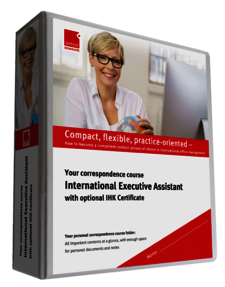The four parts are:
1. Introduction (1 paragraph)
2. Details and / or background (1 or 2 paragraphs)
3. What happens now? (1 paragraph)
4. Polite ending (1 paragraph, sometimes only 1 line)
There is one more trick: you can write a sentence to introduce the topic at the beginning of each of these four parts.
Introductory sentences
An introductory sentence is a sentence at the beginning of a paragraph that tells the reader what the paragraph is about.
You write it down, then you expand on it as needed in order to develop the topic.
Here is an example:
► This is to ask you for your help organizing the award ceremony. I have been asked to organize it this year and am not sure where to start.
The advantages of introductory sentences:
► By writing an introductory sentence, you keep yourself focused on what you are writing.
► Your reader always knows exactly what to expect when he or she has read your introductory sentence.
Use this language to keep to the 4-point structure in all your business correspondence
Now you know how easy it is to keep your readers on track with the 4-point structure, let’s look at some of the language you can use in each of these four parts.
Part 1 – The introduction
This is usually one paragraph. It says why you are writing and refers to any previous communications.
USEFUL PHRASES
- This is to ask you about...
- Here is the information you asked for.
- This is just a brief note to say thank you for coming to Germany last month and for your continued support.
- I am writing to ask for your assistance in a personal matter.
- We met at the Annual Fair last week and I said I would contact you.
- We talked last week on the phone and I promised to look into the problems you were experiencing with our products.
- A mutual acquaintance, Tony Smith, told me to contact you about IT support.
- May I once again ask you for your help with a little translation?
- I’m very sorry, but I have to postpone our appointment today.
- Andreas, I regret that I won’t be able to get the podcasts done on time.
Exception
Sometimes you might want to leave the introductory sentence until a little later in the first paragraph, for example, if you have to make an apology or if you are writing with bad news.
► First of all, I have to apologise for the delay in replying to your email.
Part 2 – Details and background
This is the main part of the message. You will need one or two paragraphs for this. If you need more than that, consider writing a report instead.
This is the part where you go into more detail about the reason you are writing, the information you are requesting, or you give the recipient the information he or she needs.
USEFUL PHRASES
- As mentioned on the phone last week, we are still not happy with the appearance of our website.
- I am attaching a pdf with full details, I hope that this will give you an overview of the progress we have made so far.
- We have come up with a few ideas, and I’m going to tell you some of them in this letter. Tell me what you think when we meet, and we will discuss it further.
- You say the shipment was damaged in transit. I would like to help you, and if you can give me your order number or your customer reference number, I will look into it.
- I have studied your catalogue in detail and would like to become your representative.
Part 3 – Who does what next?
This is the part where you write what the next step is. Who is going to do what, and when will they do it? You should not need more than one paragraph for this.
USEFUL PHRASES
- I would like to call you next week to discuss this.
- Our next step should focus of getting the documentation.
- It would be a good idea to meet up so that we can discuss the changes we need to make to the new manuscript.
- Next Friday afternoon would be ideal for a meeting. Would that suit you?
- Do you think there’s a way to speed up the production process?
- When do you think you’ll be able to get back to me?
- Please let me have full details of the costs involved, together with some sample menus.
- As soon as I receive the information from you, I’ll call you to discuss the details.
- If we have not received payment within seven days, we will be forced to hand this matter over to our attorney.
Part 4 – Closing words
A polite ending is a must in every business situation. But it is often hard to think of something original and sincere.
You’ll find it easier if you make this part really short. Sometimes, a single sentence is sufficient.
USEFUL PHRASES
- Thanks very much for helping me get to the bottom of this problem.
- I hope everything is clear now. If you need any more information, please call me.
- Call me if there’s anything you need to know.
- Looking forward to hearing from you soon.
TIP
Always be specific about next steps or deadlines. These create a sense of importance or even urgency. But be careful when using the word “deadline”. It can sound threatening, especially when you are writing to a peer or to your boss. Instead, say “time frame”.
► We’re looking at a time frame of 2 weeks, which means November 2.
Aus: International Executive Assistant / Business Correspondence Unit 3
Autorin: Jean Lennox, 2018
Werden Sie mit diesem Fernkurs zur Expertin für internationale Kommunikation:
- Start: Jederzeit
- Dauer: 6 Monate
- Inhalt: 10 Lektionen und exklusive Zusatzmaterialien + Online-Trainingscenter



